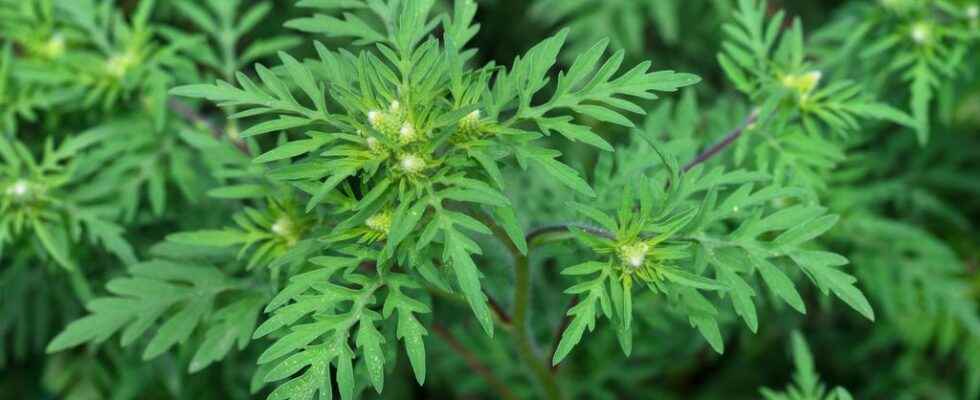This year 2021, the start of the concentration in the air of ragweed pollen is announced for August 5. To avoid too violent allergic reactions, the plant must be uprooted before the end of July.
Ambrosia is an invasive plant whose pollen emitted in summer is particularly allergenic. All it takes is a few grains of ragweed pollen mugwort per cubic meter of air so that allergic manifestations appear in sensitive people, generally during the months of August and September. This year, the National Aerobiological Surveillance Network (RNSA) launched an alert to warn people with allergies that the first concentrations of ragweed pollen in the air are expected from August 5 in the Lyon region.
An invasive and very allergenic plant
Introduced in Europe at the end of the 19th century, theAmbrosia artemisiifolia can grow up to 2 meters tall and produces small flowers. Depending on the area infested by this invasive “weed”, 6 to 12% of the exposed population would be allergic. Rhinitis, conjunctivitis, cough, tracheitis and especially asthma attacks are the main symptoms of this respiratory allergy of rare violence.
If it is only present in central and southern Europe for the moment, it will probably invade the whole continent in the coming decades.
Based on mathematical models, researchers whose work was published in the journal Nature Climate Change calculated that by 2050, the concentration of pollens of ragweed will be quadrupled compared to current rates. To explain this expansion, the authors blame global warming, which promotes the growth of this invasive plant.
How to prevent the plant from swarming?
Currently very present in the Rhône-Alpes region, ambrosia is gradually spreading: Alsace, Poitou-Charentes and even Ile-de-France, especially in Essonne. To better monitor the development of the plant, the national botanical observatories have been tasked with producing regional maps of the presence of ragweed. And locally, many uprooting operations are regularly put in place by elected officials to limit its invasion.
- If you observe ambrosia plants on your land. After making sure not to make a mistake (for example by asking the opinion of theRagweed observatory by sending a photo), do not hesitate to tear it off, taking the precaution of using gardening gloves and provided you do not have an allergic temperament. People who are very sensitive to pollen must in fact refrain from all contact with the plant, even if it is not in bloom, because the allergen is also present (in infinitesimal quantities) in the sap.
- If you observe ambrosia plants on land that does not belong to you, do a report to Ambrosia Observatory ([email protected]). You can also inform your town hall of the presence of the plant on the municipal territory.
Read also :
Subscribe to the Top Santé Newsletter to receive the latest news for free
